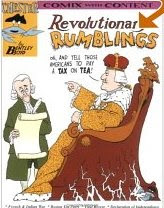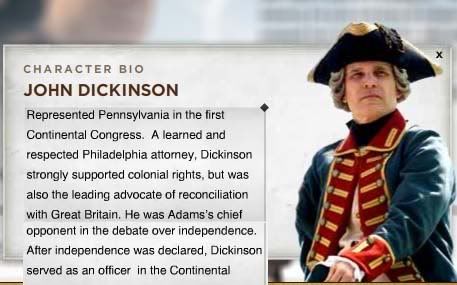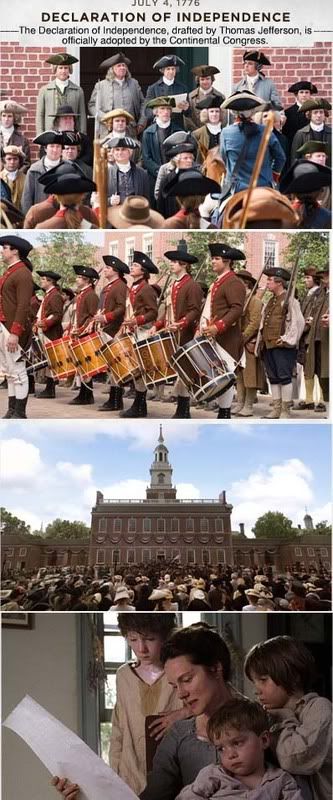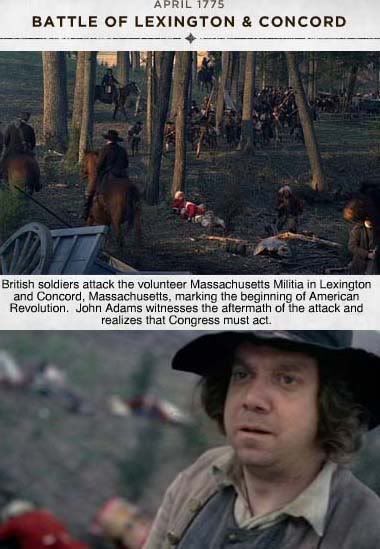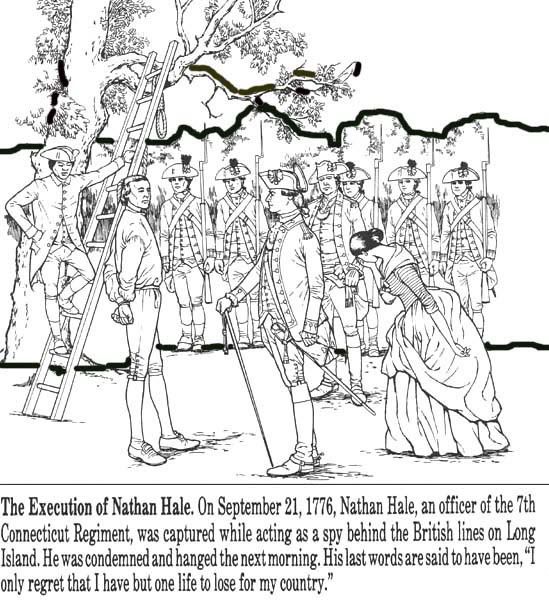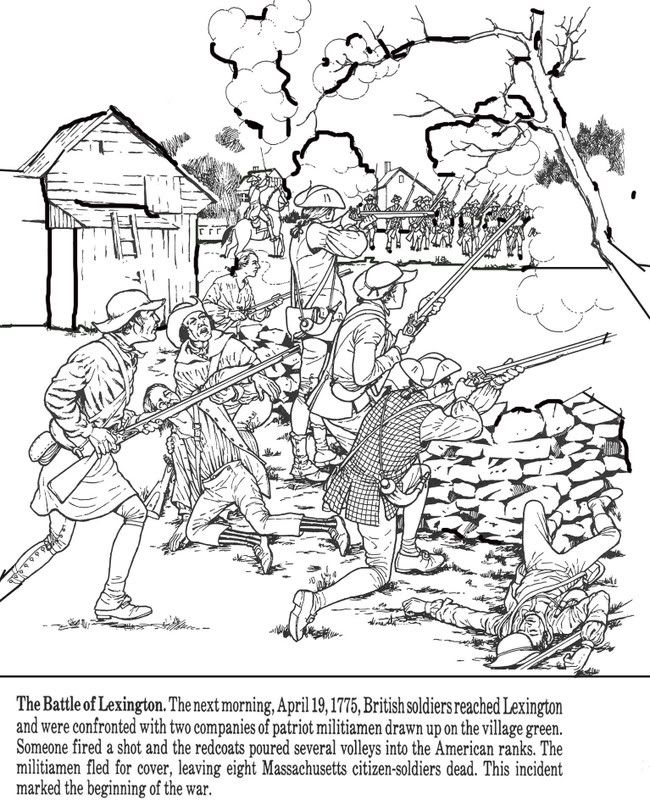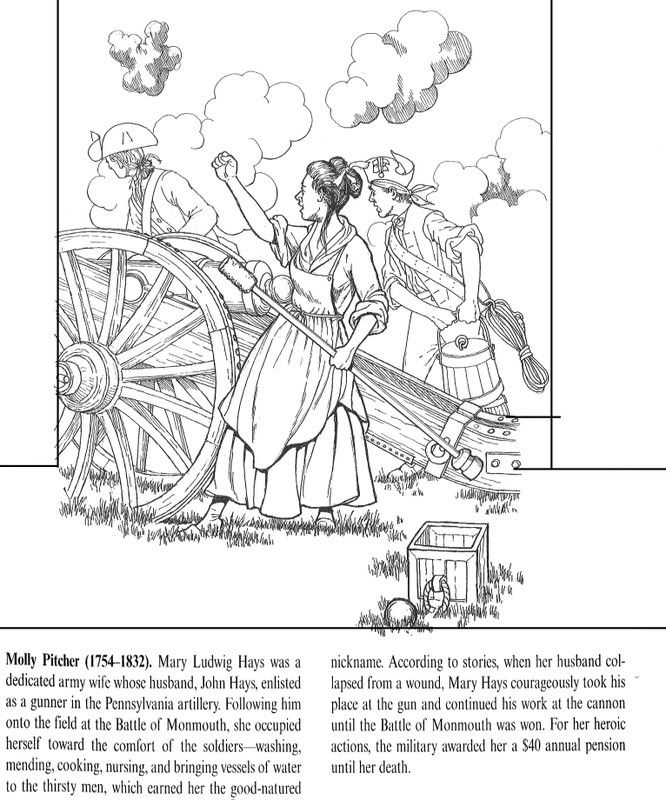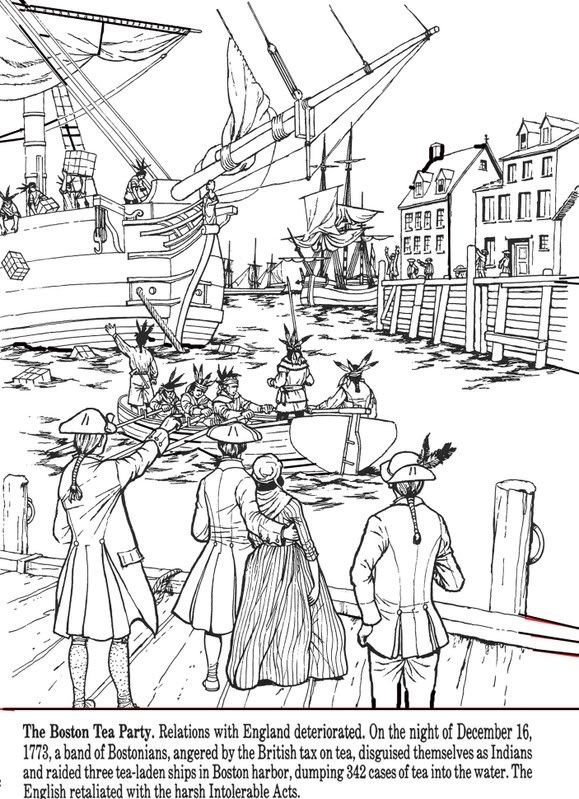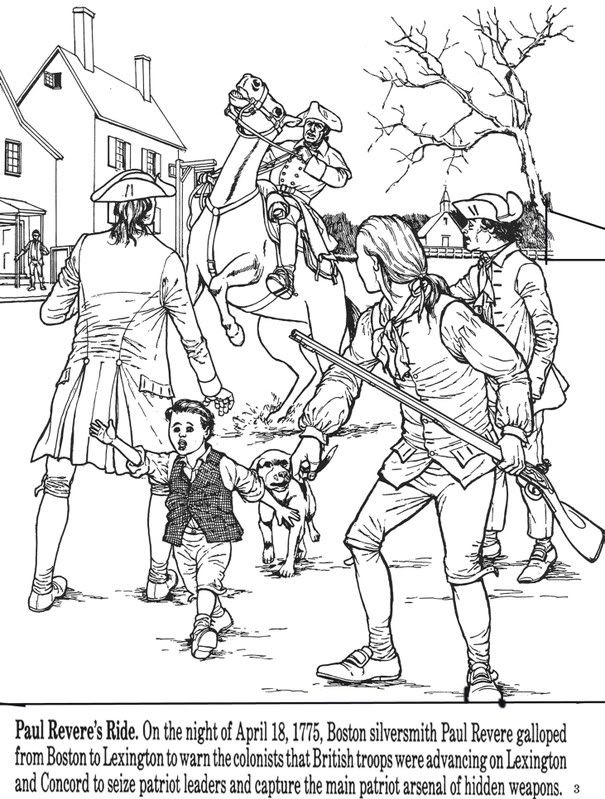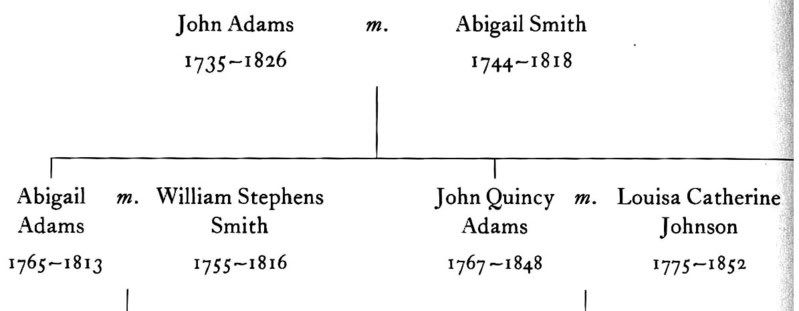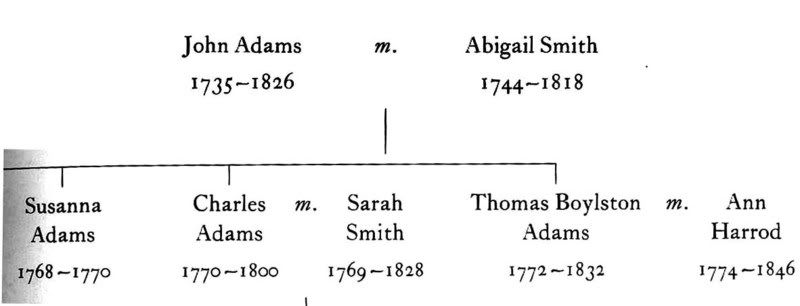Anne-Catherine de Ligniville, Madame Helvétius (23 July 1722 - 12 August 1800), nicknamed "Minette", maintained a renowned salon in France in the 18th century.
One of the twenty-one children of Jean-Jacques de Ligniville and his wife Charlotte de Saureau, Anne-Catherine de Ligniville, the niece of Madame de Graffigny, married the philosopher Helvétius in 1751. She maintained a salon which featured the great figures of the Enlightenment for over five decades.
Among the habitués of Madame Helvétius's salon were Julie de Lespinasse and Suzanne Necker, writers Fontenelle, Diderot, Chamfort, Duclos, Saint-Lambert, Marmontel, Roucher, Saurin, André Chénier, and Volney. Thinkers such as Condorcet, d’Holbach, Turgot, l’abbé Sieyès, l’abbé Galiani, Destutt de Tracy, l’abbé Beccaria, l’abbé Morellet, Buffon, Condillac ou l’abbé Raynal mingled with such scientists as d’Alembert, Lavoisier, Cuvier and Cabanis. The sculptor Houdon, Baron Gérard and other leading figures of the time such as Charles-Joseph Panckoucke and François-Ambroise Didot were also attendees. Such politicians as Malesherbes, Talleyrand, Madame Roland and her husband Roland de la Platière, Thomas Jefferson, Benjamin Franklin (who proposed marriage to her)[1], Mirabeau, Pierre Daunou, Garat, Nicolas Bergasse and Napoléon Bonaparte could also be found at her salon. Madame Helvétius died at Auteuil.
Monday, March 31, 2008
Character Biographies: Anne-Catherine de Ligniville, Madame Helvétius
Posted by David Ballela at 8:16 PM 2 comments
Labels: character biography
Character Biographies: Louis XVI
Posted by David Ballela at 7:13 PM 0 comments
Labels: character biography, Louis XVI
Character Biographies: John Dickinson
Posted by David Ballela at 6:59 PM 0 comments
Labels: character biography, John Dickinson
Wednesday, March 26, 2008
Monday, March 24, 2008
The Medical Horrors Of The Revolutionary War Era
Posted by David Ballela at 10:37 AM 0 comments
The House I Live In: Jumel Mansion
 from 8/14/05 from pseudo-intellectualism
from 8/14/05 from pseudo-intellectualism
Our first great General made the Jumel Mansion (then called the Morris Mansion) his headquarters in 1776. You can still see what it looks like now. Ms. Joseph's class went two years ago and Sam filmed it. Here's a clip. As a two for one post bonus, here's a slide show with different historical images of the old Jumel Mansion from the NYPL digital collection. The story goes that George Washington's true love was Mrs. Morris, but there was no hanky panky.
Posted by David Ballela at 10:29 AM 0 comments
Labels: field trips
The Battle Of Brooklyn (And New York)
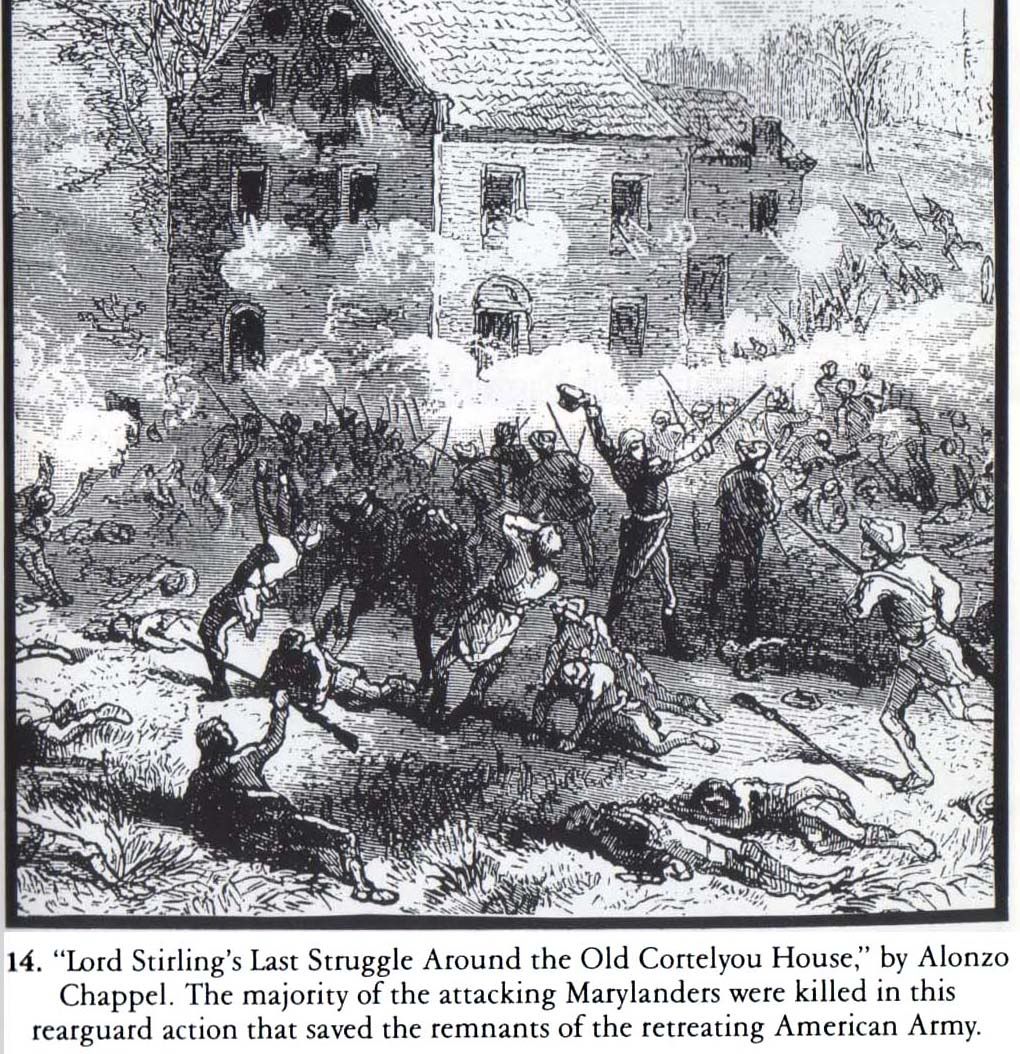 From 8/29/06 from pseudo-intellectualism
From 8/29/06 from pseudo-intellectualism
A rationalization for the benefits of having your hard drive crash is looking for all the data you've saved (all over the place!) and finding stuff you had forgotten about or missplaced. I found some old images of the Battle of Brooklyn, many of which are the same that are included in McCullough's 1776. Here I combined them in a slide show that attempts to place the events in chronological order
Posted by David Ballela at 10:19 AM 0 comments
John Adams' Reviews: The New Yorker
The Divider: In an HBO miniseries, John Adams is the indispensable man, by Jill Lepore
The history of our Revolution will be one continued lie from one end to the other,” John Adams grumbled, in 1790, when Benjamin Franklin was on his deathbed. “The essence of the whole will be that Dr. Franklin’s electrical rod smote the earth and out sprang General Washington.” The neglect of posterity was a prospect that Adams could not abide. And now he doesn’t have to. HBO’s seven-part miniseries “John Adams,” which premières on March 16th, tells Adams’s tale, with Paul Giamatti in the title role, scowling beneath fifty-seven different wigs. “He United the States of America” is the miniseries’ motto, giving credit to Adams for everything. Franklin (Tom Wilkinson) is a rascal; Washington (David Morse) is a sapskull. Jefferson (Stephen Dillane) is distracted and, finally, deluded. And poor Thomas Paine seems never to have been born. Based on David McCullough’s Pulitzer Prize-winning biography, “John Adams” is animated as much by Adams’s many private resentments as by the birth of the United States. It is history, with a grudge.
“One night in 1759, when Adams was twenty-four, and just starting out, he woke up, seized with an aching void in his chest. He picked up his quill, reached for his ink pot, and wrote in his diary, “I feel anxious, eager, after something. What is it?” It was the same thing it always was: the pain of insatiable ambition. “I have a dread of Contempt, a quick sense of Neglect, a strong Desire of Distinction,” Adams wrote that night. Say what you will about the man who became our second President, he knew himself well. Giamatti’s finely crafted John Adams is a little easier to take—he’s the Ebenezer Scrooge of the American Revolution, slouchy, grouchy, and crusty, but mushy on the inside.
“John Adams” begins with the Boston Massacre, on March 5, 1770. By the dim light of a quarter moon, eight British grenadiers have fired into a crowd of Bostonians rioting on King Street. Adams, in a daze, stumbles over the bodies of the dead and the wounded, and trudges home through the blood-stained snow, speechless at the agony of what he has witnessed. “I have no words for it, Abigail,” he whispers to his wife (exquisitely played by Laura Linney).
Abigail, wise, fierce, and long-suffering, is Adams’s anchor, the brake on his pride, his most astute adviser. After the British soldiers are charged with murder, Adams agrees to defend them in court, defying his fellow Sons of Liberty, including his rabble-rousing cousin, Samuel Adams (Danny Huston), who wants nothing more than for the redcoats to hang. The night before he is to deliver his summary to the jury, Adams, in his nightshirt, paces the floor of his bedchamber, while Abigail, tucked beneath the covers, reads a draft of his statement. Impatient for her critique, he opens and closes the bed curtains, a scene that’s a nice play on the eighteenth-century phrase “curtain lecture” (a shrewish version of what we mean by “pillow talk”). “Vanity. You have overburdened your argument with ostentatious erudition,” Abigail observes, steering her husband, as always, onto a better course.
We then follow Adams to Philadelphia, where he serves as a Massachusetts delegate to the First Continental Congress. In the wake of Parliament’s passage of the Coercive Acts (which included a measure closing Boston Harbor to trade), Adams is tireless but unable to persuade delegates from the other colonies to support a struggle that, so far, looks to be Boston’s fight. He heads home, defeated. But on April 19, 1775, just before Adams is to travel back to Philadelphia for the Congress’s second meeting, shots are fired in Lexington and Concord. From his farm south of Boston, Adams races to the scene and rides through the bloody fields, once again picking a path over the dead and the wounded. “There can be no mistaking Britain’s intentions now,” he tells Abigail.
Back in Philadelphia for the Second Continental Congress, Adams ardently argues for declaring independence. Imagine an animated version of John Trumbull’s famous painting of the signing of the Declaration of Independence—the image engraved on the back of the two-dollar bill—and you’ve got a pretty good idea of the scene. Independence, this miniseries would have you believe, was almost entirely Adams’s doing. As history, and maybe even as television, this is a hard argument to make, because although Adams presented the case to Congress, it was Thomas Paine who convinced the American people to support independence and Thomas Jefferson who wrote the document declaring it. “I am obnoxious, suspected, and unpopular,” Giamatti’s Adams tells Jefferson—a line taken from one of Adams’s letters, like much of the dialogue—graciously ceding the task of drafting the Declaration of Independence to the Virginian. Adams forever regretted this. “Jefferson ran away with all the stage effect,” he complained, “and all the glory.”
There is much that is wonderful in “John Adams,” which was produced by Tom Hanks and Gary Goetzman, who also launched HBO’s 2001 miniseries “Band of Brothers.” Giamatti and Linney brilliantly portray the tenderness, loneliness, and passionate understanding that marked John and Abigail’s half century of marriage. Eighteenth-century Boston, and much else besides, is beautifully realized: lush and bustling, with ships’ masts looming and halyards clanking. If there’s a film that better captures the look of Colonial America, I haven’t seen it. For Revolution junkies, spotting the cameos makes an awfully good parlor game. (My favorite: Henry Knox, riding by Abigail’s house on his horse, on his way to Dorchester Heights to blast the British out of Boston. Joseph Warren rides by, too, after the Battle of Bunker Hill, except that he’s dead, and on an oxcart, so a bit of a disappointment, really.) There’s very little of the war itself—Adams was no soldier—but, perhaps as a solace, there’s plenty of bloodletting, not to mention amputation. (A word to the squeamish: it goes badly.) Actually, the inoculation of Abigail and the Adams children against smallpox—more blood; also pus—is nearly the most terrifying scene in the four episodes made available to reviewers. It’s second only to the tarring and feathering of a British customs official in Boston, the brutality of which Adams watches with horror, in a masterly sequence that exposes the violence of insurrection and helps explain the future President’s enduring fear of democracy.
At its best, the storytelling itself manages to accommodate a sense of historical contingency. American independence was not inevitable. It was debated. It didn’t happen overnight. No one was sure how it would turn out. Adams’s jaundiced view allows for this insight, too: war is a mess, and only ever glorious in hindsight. Finally, there’s something almost ineffably moving about watching the debates of the Second Continental Congress, where Adams truly shone.
There are, of course, little things that irk. Everyone is far too frank with everyone else (the eighteenth century was nothing if not coy), and this viewer happens to wish that the Pennsylvania delegate and eloquent opponent of independence, John Dickinson (Zelijko Ivanek), hadn’t been made into a Quaker Cruella De Vil, a distortion necessary, I suppose, to make Adams appear more stalwart. But the bigger problem is how far the writing has to go to make Adams both more important and more virtuous than everyone around him except his wife, as if to justify his prodigious self-regard and disdain for his contemporaries. Adams didn’t “unite the states of America,” but he accomplished a hell of a lot. He was bold. He was brilliant. That doesn’t mean he wasn’t also a heel.
After Adams’s devastating failure, in the election of 1800, to win a second Presidential term, he spent much of the rest of his life worrying about how history would treat him. In 1807, he read Mercy Otis Warren’s three-volume “History of the Rise, Progress, and Termination of the American Revolution,” a twelve-hundred-page book that devoted a scant four pages to the character of one John Adams. He fell into a rage. Adams wrote Warren ten letters—some more than twenty pages long—of petty, rambling vituperation. Warren had assailed his temperament: “In the 392d page of the third volume, you say that ‘Mr. Adams, his passions and prejudices were sometimes too strong for his sagacity and judgment.” She had neglected him: “You have carefully recorded the appointment of Mr. Jay to Madrid, in page 141, Vol. II, to have been on the 27th of September, 1779, yet have taken no notice of mine, which was on the 29th of the same month.” She would not even grant him alphabetic preëminence. When Warren listed Franklin, Jay, and Adams as ambassadors, Adams complained that his name ought to have appeared first in that list, as it had in their commission. “You will say, no doubt, this is ‘sighing for rank, he sneered, anticipating her objection. “Very well: say so, Mrs. Warren. Make the most of it.”
Adams had a right to feel betrayed: for decades, Mercy and Abigail had been close friends. But his reading of Warren’s “History” was paranoid and hysterical, and his letters to her are the rantings of a bully: she is unladylike; there are things he could say about her if he weren’t such a gentleman; and she could not possibly be motivated by anything but bitterness at his having been unwilling to grant members of her family political preferment. Adams is by no means the hero of Warren’s “History,” but neither is anyone else; it’s an epic history of an age, not a profile of its leading figures. And though Warren may have resented Adams, she, along with other Americans who had only recently seen him voted out of office, also felt quite certain that he suffered from “pride of talents” and a love of power.
Mercy Warren had a response to Adams’s abuse. “Were she to write her History over again, and correct her errors, as you seem to wish her to do,” she answered, what must she write? Adams would obviously be contented only if she told the world that he was free of ambition and vainglory, and that his writings “established the State and Federal Constitutions, and gave the United States all the liberty, republicanism, and independence they enjoy; that his name was always placed at the head of every public commission; that nothing had been done, that nothing could be done, neither in Europe nor America, without his sketching and drafting the business.” Who would believe such silliness? “Mr. Adams might indeed think this a very pleasant portrait, but I doubt whether the world would receive it as a better likeness.” Ah, just give it time, Mrs. Warren. Give it time.
Posted by David Ballela at 10:14 AM 0 comments
Labels: reviews
John Adams' Reviews: NY Times
Blowhard, Patriot, President, By ALESSANDRA STANLEY
When John Adams begins acting like a pompous windbag, his wife, Abigail, reproaches him with a single word.
“Ambition,” Abigail warns, when Adams tells her that he will get a lot of attention if he defends British soldiers in the Boston Massacre trial.
“Vanity” is what she says to steer her husband away from what she calls “ostentatious erudition.”
“Casting,” she might have told the producers of this new seven-part HBO mini-series, which begins on Sunday evening with a double episode.
John Adams is the weakest part of “John Adams.”
Based on David McCullough’s biography of Adams, the second president, “John Adams” is certainly worthy and beautifully made, and it has many masterly touches at the edges, especially Laura Linney as Abigail. But Paul Giamatti is the wrong choice for the hero.
It’s not his fault. Mr. Giamatti, who starred in “Sideways,” is a gifted actor. Still, in this historical drama, Mr. Giamatti is a prisoner of a limited range and rubbery, cuddly looks — in 18th-century britches and wigs, he looks like Shrek.
And that leaves the mini-series with a gaping hole at its center. What should be an exhilarating, absorbing ride across history alongside one of the least understood and most intriguing leaders of the American Revolution is instead a struggle.
Mr. Giamatti valiantly tries to do justice to the quicksilver contradictions of Adams’s character. This son of a New England farmer was described by Mr. McCullough as “high-spirited and affectionate, vain, cranky, impetuous, self-absorbed and fiercely stubborn.” Mr. Giamatti manages some parts quite well, but the effort is too labored not to drag on the fabric of the story — especially at first, when viewers who haven’t read many biographies or seen the musical “1776” are likely to be puzzled by this cute, homely man who adores his wife and hollers angrily at his children.
One possible reason Abigail is so often tasked with uttering single-word sketches of Adams’s personality is that Mr. Giamatti cannot make those traits stand out distinctly enough on his own.
It’s not a question of looks; even the portraitist Gilbert Stuart didn’t try to hide that Adams was portly and balding. It’s the screen presence. Charles Laughton was an odd-looking actor who would never be cast as a romantic lead, but he managed to transform himself to suit a wide range of parts, from Henry VIII to Rembrandt to the Hunchback of Notre Dame. Mr. Giamatti doesn’t have the same power and flexibility.
Mr. Giamatti is not helped by the precedent set by William Daniels close to 40 years ago, when he played Adams in both the musical and the film version of “1776” and was pitch-perfect in the part. Mr. Daniels made a career playing brilliant, pompous and irascible men (“St. Elsewhere,” “Boy Meets World”), and he was at his peak as the most confounding of the founding fathers. As conceived by Peter Stone, who wrote the book (Sherman Edwards wrote the music and lyrics), Adams is irritable and irritating, but ultimately irresistible; decades before Mr. McCullough wrote his biography, Mr. Stone had captured the vitality, passion and humor that made Adams’s hot temper and vanity endearing.
This series has a “Masterpiece Theater” gravity and takes a more somber, detailed and sepia-tinted look at the dawn of American democracy. It gives viewers a vivid sense of the isolation and physical hardships of the period, as well as the mores, but it does not offer significantly different or deeper insights into the personalities of the men — and at least one woman — who worked so hard for liberty.
“John Adams” begins in 1770 and comes to an end on July 4, 1826, the 50th anniversary of the Declaration of Independence and the date of Adams’s death at 90 — the same day that Thomas Jefferson died. So the mini-series does not focus solely on the drama and political brinkmanship in Philadelphia at the moment when the members of the Continental Congress debated whether to break with the British crown and assert independence.
Early on, Adams finds common cause with the aristocratic Jefferson (Stephen Dillane) and wise, crafty Benjamin Franklin. George Washington, stiffly portrayed by David Morse in a fake nose, is not very interesting, but Mr. Dillane is a slyly intelligent, brooding Jefferson and steals every scene he is in, even when he has no dialogue.
Some of the more delicious scenes are set in France, at the court of Louis XVI, where Franklin, deliciously played by Tom Wilkinson, wallows impishly in the hedonism — and flattery — of the French nobility, and Adams, summoned there to help pressure France for assistance against Britain, fumes in frustration and Yankee puritanism.
The mini-series pays keen attention to the details of colonial life: a customs agent loyal to the crown is tarred and feathered in Boston Harbor in an excruciating scene in which a mob tears off his clothes, pours hot tar over his naked body, then literally rides him out of town on a rail. Abigail boldly chooses smallpox inoculations for herself and her children — and back then it was a gruesome and crude process that required smearing puss from an infected sore onto a thin blade and cutting it into the patient’s flesh — and one child contracts the disease anyway.
Abigail, the woman who stayed home in wartime, managing the farm and raising four children, is the moral center of the mini-series: hard-working, uncomplaining, thoughtful and devoted to her husband and the cause of freedom, women’s as well as men’s.
“I long to hear that you have declared an independency,” she wrote in a March 1776 letter to Adams. “And, by the way, in the new code of laws which I suppose it will be necessary for you to make, I desire you would remember the ladies and be more generous and favorable to them than your ancestors. Do not put such unlimited power into the hands of the husbands.”
Some of the dialogue is borrowed from the Adamses’ correspondence during long separations. With words, but also with eloquent gestures and glances, Ms. Linney delicately evokes Abigail’s humor, loyalty and fierce intelligence.
“You do not need to quote great men to show you are one,” she tells Adams.
You do need the right actor. A different one might have made “John Adams” great.
This article has been revised to reflect the following correction:
Correction: March 19, 2008
A television review in Weekend on Friday about “John Adams,” the new HBO mini-series, misidentified the disease one of the Adams children contracts. It is smallpox, not measles.
This article has been revised to reflect the following correction:
Correction: March 21, 2008
A television review in Weekend last Friday about “John Adams,” the new HBO mini-series, misstated the timing of the illness of one of the Adams children. It followed an inoculation for smallpox; it did not precede the inoculation. The review also referred incorrectly to the man who was tarred and feathered by a mob. He was a customs agent, not a tea merchant.
Posted by David Ballela at 9:51 AM 1 comments
Labels: reviews
Sunday, March 23, 2008
Coloring Pages: Nathan Hale And The Battle Of Lexington
Posted by David Ballela at 7:16 PM 0 comments
Labels: coloring pages
Bentley Boyd's Comics: Boston Tea Party Series
Posted by David Ballela at 7:07 PM 0 comments
Bentley Boyd's Comics: Thomas Jefferson
Posted by David Ballela at 8:39 AM 0 comments
Bentley Boyd's Comics: Patrick Henry
The online archive of his comics is located at this address
Book compilations organized by themes are available at amazon
Posted by David Ballela at 8:32 AM 0 comments
The Revolutionary War On Wednesday
Posted by David Ballela at 8:28 AM 0 comments
Saturday, March 22, 2008
Benjamin Franklin: The Classic Illustrated Version: Part 1
Posted by David Ballela at 4:53 PM 0 comments
Bentley Boyd's Comics: The Continental Congress Series
The online archive of his comics is located at this address
Book compilations organized by themes are available at amazon
Posted by David Ballela at 4:45 PM 0 comments
Bentley Boyd's Comics: Boston Massacre Series
The online archive of his comics is located at this address
Book compilations organized by themes are available at amazon
Posted by David Ballela at 3:10 PM 0 comments
Labels: comics
American Revolution Mini-Book
Posted by David Ballela at 10:22 AM 0 comments
1776: The Kid's Discover Magazine Version
I have just about every one in this excellent series. The magazine format presents social studies and science information to kids in an easy to understand and graphically appealing manner. Also reasonably priced
Posted by David Ballela at 9:27 AM 0 comments
John Adams: Boston And Vicinity Sites Of Liberty
from the American Experience John Adams' site
Posted by David Ballela at 9:20 AM 0 comments
Labels: maps
John And Abigail Adams Timeline 2
Posted by David Ballela at 9:03 AM 0 comments
John And Abigail Adams Timeline: Part 1
I just discovered scrib I had been (tediously) chopping up pdf's and bigger images so that they could be used in a google video, now I can just embed a pdf., what great possibilities!
Posted by David Ballela at 8:57 AM 0 comments
1776: Cool, Considerate Men
The lyrics
Dickinson:
Oh say do you see what I see?
Congress sitting here in sweet serenity
I could cheer; the reason's clear
For the first time in a year Adams isn't here
And look, the sun is in the sky
A breeze is blowing by, and there's not a single fly
I sing hosanna, hosanna
Hosanna, hosanna
And it's cool
Come ye cool cool conservative men
The likes of which may never be seen again
We have land, cash in hand
Self-command, future planned
Fortune flies, society survives
In neatly ordered lives with well-endowered wives
We sing hosanna, hosanna
To our breeding and our banner
We are cool
Come ye cool cool considerate set
We'll dance together to the same minuet
To the right, ever to the right
Never to the left, forever to the right
May our creed be never to exceed
Regulated speed, no matter what the need
We sing hosanna, hosanna
Enblazoned on our banner
Is keep cool
What we do we do rationally
We never ever go off half-cocked, not we
Why begin till we know that we can win
And if we cannot win why bother to begin?
Rutledge:
We say this game's not of our choosing
Why should we risk losing?
All:
We are cool
To the right, ever to the right
Never to the left, forever to the right
We have gold, a market that will hold
Tradition that is old, a reluctance to be bold.
Dickinson:
I sing hosanna, hosanna
In a sane and lucid manner
We are cool
All:
Come ye cool cool considerate men
The likes of which may never be seen again
With our land, cash in hand
Self-command, future planned
And we'll hold to our gold
Tradition that is old, reluctant to be bold.
We say this game's not of our choosing
Why should we risk losing?
We cool, cool, cool
Cool, cool, cool
Cool cool men.
The context from Scene 3
As the argument between the delegates grows more heated, Dickinson launches into a long tirade against Adams and his supporters, calling him an agitator and a madman. Adams lashes back by accusing Dickinson and his fellow conservative "cool, considerate men" of hanging to the rear of every issue to see who will triumph; this results in a physical fight breaking out. Caesar Rodney of Delaware separates the two and berates them for not focusing on the real enemy: England. He collapses from the overexertion; he has cancer. Colonel McKean offers to take him back home. This leaves the Delaware delegation with only one man present, George Read, and he is not in favor of independence. Rutledge, seeing the majority swinging in his favor, moves for a vote on the question of independence. Franklin seeks to stall the motion, and asks that the resolution be read aloud again. As Thomson is reading it, the new New Jersey delegation arrives, led by Rev. John Witherspoon. He informs the Congress that they have been instructed to vote in favor of independence. The vote is now six for independence and six against (with New York's usual "courteous" abstention), and Adams reminds Hancock of his duty as President to break all ties. Seeing that the resolution might pass, Dickinson moves that any vote for independence must pass unanimously on the grounds that "no colony [may] be torn from its mother country without its own consent." His motion is seconded by Read, and the vote produces the same tie, which Hancock breaks by voting for unanimity. His reasoning is that without consent of all the colonies, any of them voting against independence would likely be forced to fight on England's side, and that the new nation would "carry as its emblem the mark of Cain."
Posted by David Ballela at 7:35 AM 0 comments
Labels: 1776
Friday, March 21, 2008
Tomahawk And The American Revolution, Part 2
The story is entitled "Adventure in New York"
Posted by David Ballela at 10:26 PM 0 comments
Labels: comics
Tomahawk And The American Revolution, Part 1
In looking for reprints of Tomahawk Comics, which I thought would be a good resource to compliment the John Adams' HBO series, I went to Forbidden Planet on Broadway and 13th Street. No such thing, but one of the clerks told me that a store called the Time Machine on 14th Street and 8th Avenue (Roger''s Time Machine
207 W 14th St Second Floor, (212) 691-0380) might have old copies at a reasonable price. Well, what a find that store was. As one reviewer writes, "It's not a place to bring a date," not because it's seedy, but it's a bit on the worn side. Lots of comics in bins, all conditions, all prices. The owner, I think named Roger, was very menschy and when I told him I wasn't a collector, but a teacher, he steered me to a couple of amazingly inexpensive comics that fit the bill. One was a Superman Bicentennial Issue (large format) that had several Tomahawk, American Revolution themed stories. I scanned the first story and cropped it to fit the Google Video player and added some music from the Patriot (forgive me Mel Gibson haters). Here's part one:
from treasurycomics
Limited Collectors' Edition C47 - 1976
The most awesomest back cover ever--a history of the US presidents! I learned who the presidents were from this cover more than any history class. ...Oh, I guess I should mention the front cover and the insides, shouldn't I?
The front cover re-uses a classic Superman cover by Jack Burnley. That original appears in the new book Superman Cover to Cover as an example one of the finest Superman comic covers.
This book is a bit of a cheat--great front cover, but the insides are all reprints of DC's Tomahawk series. (and not even those cool Tomahawk issues by Frank Thorne with the Kubert/Adams' covers! *Yawn*)
Sorry, I don't mean malign the fine efforts of the writers and artists who crafted all those years of Tomahawk comics. Its just that, if you're gonna call the book Superman Salutes the Bicentennial, it's gotta be Superman doing the saluting.
Posted by David Ballela at 10:24 PM 0 comments
Labels: comics
Tuesday, March 11, 2008
Coloring Pages: Deborah Sampson And Molly Pitcher
Posted by David Ballela at 7:41 AM 0 comments
Labels: coloring pages
Monday, March 10, 2008
Coloring Pages: Boston Tea Party And Paul Revere's Ride
Posted by David Ballela at 4:36 PM 2 comments
Labels: boston tea party, coloring pages, paul revere
Sunday, March 9, 2008
Tomahawk Comics 2
Some of these story ideas from these comics are wildly imaginative. I'd turn over some of these ideas to kids and let them try to pen their own stories and/or dialogue
The slide show displays some Tomahawk panel images I found. I tried to boost the resolution so they could be visible in the small video viewer. Again, I used a Last Of The Mohican song as a soundtrack. Some info about Tomahawk comics from comic book resources, author Scott Shaw
Title: Tomahawk
Issue: No. 90
Date: Jan. – Feb., 1964
Publisher: National Periodical Publications, Inc. (DC Comics)
Cover Artist(s): Bob Brown
Wow! If the Revolutionary War was even half as weirdly nutty as this cover depicts, I would have paid more attention during my high school American History classes!
TOMAHAWK’s first issue is date Sept. – Oct., 1950. It introduced Tomahawk, a raccoon-hat-and-buckskin-wearing frontiersman/scout and his young sidekick Dan Hunter. Initially, their stories were relatively realistic (for comic books, anyway) in which they battled Native American Indians and the British Redcoats during the Revolutionary War. (And check out that cool logo that’s shaped like a tomahawk!) But by the late 1950s, as the nation-wide fad built on Walt Disney’s “Davy Crockett” (one that at least partially fueled the comic’s success) began to fade, TOMAHAWK began to feature more and more fantasy elements, including dinosaurs, gorillas, cavemen, aliens, super-villains -- and, as this issue attests -- monsters! (Okay, it turns out to be a dinosaur –a really, really goofy-looking dinosaur -- but based on this cover, it could turn out to be just about anything that’s green and scaly!)
This issue’s 17-page cover story, “The Prisoner In The Pit”, Part 1, was written by France Herron and drawn by Fred Ray. It begins when the British steal a statue that was erected to honor one of Tomahawk’s rangers. “We’ll not only destroy it – we’ll melt it into gun-shot to fire back at the Yankees!” Tomahawk and his men vow to return the statue to its rightful owners. Later, while on their recovery mission, the Rangers find themselves pinned down by British cannon-fire. The team’s strongman, Big Anvil, single-handedly takes out a cannon, but in the process, causes an avalanche that blasts away a cliff-face, revealing a barred pit, one that contains a scaly “something”. The creature grabs the unconscious Big Anvil right through the bars of its prison, dragging him inside. Tomahawk and his Rangers follow, discovering that the barred chamber is connected to corridors of an ancient castle. There, they discover reptilian footprints, ranging from human-sized to monstrous, as well as wall paintings depicting Vikings! Tomahawk and his crew continue their search for Big Anvil, but that night, a huge, green dinosaur (somewhat resembling an Allosaurus with a big fin on top of its skull) attacks a nearby settlement. The Rangers show up, noticing that the critter seems to be afraid of fire. (Kinda disappointing, huh?) But while rescuing some locals, the “prisoner from the pit” grabs and holds helpless Tomahawk in one of its monstrous claws! In Part 2 of this story, “Secret Of The Thousand-Year Threat”, Dan Hunter tosses Tomahawk a fiery torch, which he uses to force the fin-headed dinosaur to let him go. The Rangers use more torches to drive the beast out of town, but as the sun rises and they attempt to track the marauding critter, they’re ambushed by a combination of British troops and Native American Indian warriors! Using the beast’s sunken footprints as makeshift foxholes, the Rangers evade their enemy’s bullets and arrows. Meanwhile, the commotion attracts the dinosaur’s attention and it soon puts the Ranger’s attackers to rout. Then it heads for a waterfall, through which it (and the tracking Rangers) passes, into a great cavern filled with the skeletal remains of similar time-lost reptiles – but still no sign of Big Anvil! As the beast turns its attention to its human pursuers, Tomahawk and company seek safety within the rib cage of one of the cavern’s deceased inhabitants. But their monstrous foe rolls their hiding place down a hill, shattering it! Before it can chow down on its buck-skinned brunch, it’s called off its master, one with a familiar voice – Big Anvil! It turns out that the critter grabbed the big lug because he was a dead ringer for it’s former master, one of the Vikings depicted on the walls of the castle’s corridors.
TOMAHAWK:
Your story explains many things! The beasts were SMALL when the Vikings captured them from a sorcerer’s castle – shown in the paintings! That’s why we saw LITTLE tracks – that were old…VERY old…They date back to the Viking raids of a THOUSAND YEARS AGO! The Vikings brought them here – built the castle, and kept their “pets” in the dungeons below! And when the Vikings didn’t return from a last voyage, the beasts were left to roam through the corridors – while the centuries slowly buried the castle…BUT…as they reached the end of their life span – which must be 1,000 years – they stalked here – to this graveyard – and died! This one is the LAST – and he, too, came here to die!
The Rangers return to their original mission, to recover that stolen statue. But when Tomahawk’s squad enters the enemy camp, a sentry immediately spots them. Fortunately, the beast has followed them, and after it sends the enemy packing, grabs the statue and returns to its graveyard, lying down to expire with the figure clasped to its reptilian chest.
TOMAHAWK:
THERE’S the reason! You know, the man who represented us Rangers on that statue was BIG ANVIL! The beast saw it -- and thought it WAS HIM, DEAD! So it brought it here – to die with its master!
BIG ANVIL:
We got our statue back – but I lost…a friend!
This issue also features the back-up story, “Booby-Trap Town”, also written by France Herron and drawn by Fred Ray (here’s its cool splash-panel), in which Tomahawk and Dan Hunter fall into “Star-Crater Swamp” and are shrunken to the miniature size of THE INCREDIBLE SHRINKING MAN (1957)! To lighten things up a bit, there’s also a one-page “Chief Hot Foot” gag by cartoonist Henry Boltinoff in this funnybook. And this issue even sports a back-cover ad for Gilbert’s “Auto-Rama”, featuring artwork by the late, great Kurt Schaffenberger!
ODDBALL Factoid –TOMAHAWK No. 90 must have been a best-seller for DC, because only slightly over one year later, TOMAHAWK No. 104 would features a nearly identical cover (also drawn by Bob Brown), illustrating the 16-page story “The Fearful Freak Of Dunham’s Dungeon!” (which was again drawn by Fred Ray!) Note how the dungeon-monster’s eyes are bigger (and now bloodshot), its arm is grislier-looking, and Tomahawk and the Rangers’ reactions are more extreme…it’s as it editor Murray Boltinoff held up TOMAHAWK No. 90 to Bob Brown and said, “See this? Draw it all over again…only more so!” (If anything, this issue’s monster is even sillier – and here’s an image of it from this comic’s interior to prove it!)
Posted by David Ballela at 12:03 PM 0 comments
Labels: comics, lesson ideas, tomahawk
Tomahawk Comics 1
In looking for Revolutionary War graphic materials I stumbled upon Tomahawk comics.
The slide show displays some cover images I found. I used a Last Of The Mohican song as a soundtrack. Some info about Tomahawk comics from comic book resources
Tomahawk is a comic book character whose adventures were published by DC Comics during the 1950's and 1960's in his own comics series. His uniqueness stems in part from the time frame of his fictional adventures: the American Revolutionary War. Known as either Tom Hawk or Thomas Haukins, depending on which of two versions of his published history the reader prefers, "Tomahawk" was a soldier who served under George Washington in the warfare between the British, French and Iroquois forces during the decades prior to the American Revolutionary War and acquired his nickname due to its resemblance to a trademark weapon of the Iroquois Confederacy's warriors, and to the skill he developed with that weapon. He subsequently achieved further fame as one of Washington's most capable operatives during the Revolution itself, leading a band of soldiers under the informal nickname of "Tomahawk's Rangers". His series lasted 140 issues, from 1950 to 1970. The last 10 issues focused on "Hawk, Son of Tomahawk", and the cover title said "Son of Tomahawk". In addition he appeared in Star Spangled Comics from issue 69 in June 1947 to 130 July 1952 and in World's Finest Comics from issue 33 in March 1948 until issue 101 in May 1959. The character was created by writer Joe Samachson and artist Edmund Good, but his most famous portrayers were Ed France Herron and Fred Ray. In issues 35 and 36, Tomahawk met a young Davy Crockett, who was very popular at the time. This is a historical error, as Crockett was not born until after the Revolutionary War.
Issue 81 was also notable, introducing Miss Liberty, one of the earliest patriotic superheroes by the vague internal chronology of the DC universe, who would make several more appearances in the series. In the Time Masters mini-series, it is established that Tomahawk's associate Dan Hunter is actually Rip Hunter's brother who travels back in time to stop the Illuminati during the Revolutionary War, deciding to stay in the past.
In 1998, Tomahawk appeared in a 'Vertigo Visions' one-shot, written by Rachel Pollack. this issue retold his origin.
Issue #587 of 1113
Title: Tomahawk
Issue: No. 81
Date: July – August, 1962
Publisher: National Periodical Publications, Inc. (DC Comics)
Cover Artist(s): Bob Brown
Before Captain America, before The Shield, even before Union Jack, there was Lady Liberty, the costumed “frontier heroine” of the Revolutionary War! But I’ve gotta admit that I’m somewhat relieved that the cover-copy of this issue of TOMAHAWK makes it clear that the objects Miss Liberty is tossing are “fused power horns”. At first glance, they look more like explosive, uh, sex toys!
This issue’s 9-page cover-story, “Miss Liberty – Frontier Heroine”, was written by France Herron and drawn by Fred Ray. It begins (as seen on this comic’s cover) Tomahawk and Dan are ambushed and captured by the British “lobsterbacks” and their Native American Indian allies. But Tomahawk’s captors are surprised when they’re interrupted by Miss Liberty, a red-white-and-blue costumed “frontier heroine” who hurls explosive powder horns to disperse their troops (which turn out to be nothing more than harmless firecrackers.)
DAN HUNTER (whispering):
Golly, it’s enough to make my eyes water, TOMAHAWK…a woman patriot risking her heck for us!
TOMAHAWK (whispering):
Yes, lad – and perhaps, one day, we can repay the costumed lady!
Fleeing, Miss Liberty diverts the Redcoats’ attention from Tomahawk, while he and Dan Hunter proceed on to Newtown, where they confer with Mr. Barnaby, an apothecary owner, regarding a shipment of Yankee munitions that the British are out to confiscate. While there, they meet nurse Beth Lynn, who’s secretly Miss Liberty, the leader of the “Women’s Underground”! Time and time again, the frontier heroine and her female forces aid Tomahawk against the “lobsterbacks” in various cleverly non-combative ways (such as setting fire to a haystack to create a smokescreen, or spilling a butter-churn’s contents to cause the Redcoats’ horses to slip off a bridge!) Later, Tomahawk thanks and congratulates his new ally:
TOMAHAWK:
You’ve done an amazing job organizing this Women’s Underground, MISS LIBERTY! But why the necessity of a disguise?
LADY LIBERTY:
I have no choice, TOMAHAWK! My brother is being held captive in England! If my true identity were known, they would take their revenge out on him!
Finally, the British confiscate the local ferry of Wilk’s Landing, making it impossible for druggist Barnaby to transport the munitions to the American troops. To make matters ever worse, the Redcoats issue a rather harsh edict to eliminate any further resistance from the Yankees:
PROCLAMATION:
Hear ye! A warning to any village that harbors the fugitives Tomahawk or Dan Hunter! The township will be razed to the ground and people banished from the territory!
But Tomahawk and Miss Liberty concoct a plan together. Tomahawk and Dan allow themselves to be spotted in town by British patrols, and sure enough, the Redcoats force the locals to evacuate Wilk’s Landing before it is set fire and destroyed. However, the villagers are allowed to take their personal possessions with them, a situation they counted on:
TOMAHAWK:
There it be, sir…hollowed candles and broomsticks, containing lead ball and long rifle barrels…sacks of “grain “ holding powder! An arsenal for the army!
CONTINENTAL OFFICER:
Great thunder! These people sacrificed their village to smuggle the supplies to us! It…almost seems impossible!
TOMAHAWK:
It would have been…had we not had MISS LIBERTY’S help! You know, Dan – there’s only ONE woman who could have possibly known our plans…
DAN HUNTER:
Nurse Bess Lynn…when she entered the apothecary’s shop! But there’s no proof, TOMAHAWK…and frankly, I like it better this way!
This issue of TOMAHAWK also includes the following stories and features:
* “The Strange Omens Of The Indian Seer”, drawn by Fred Ray (While dealing with Jacob Bragg, a white man who’s inciting local Indians to turn renegade, Tomahawk learns of Smoke Reader, a medicine man who can apparently predict the future. Despite Bragg’s precautions, Tomahawk makes good use of cooperative Smoke Reader’s omens to stop the troublemaker.)
* “Tomahawk’s Frontier Valet”, drawn by Fred Ray (When Tomahawk and Dan Hunter’s friend Lord Boswell disappears on an adventure in “some uncivilized area in the world”, his last will and testament bequeaths his stodgy valet, Reeves, to the buck-skinned frontiersmen! But when one of Reeves’ blunders causes them to be captured by a local tribe of Indians, Tomahawk and Dan discover they’re holding Lord Boswell – apparently the victim of amnesia -- as a prisoner! Tomahawk rescues Boswell and restores his memory in the process, then reunites Reeves with his lost master!)
* Two gag-strips (one half-page and one full page) starring “Chief Hot Foot” by cartoonist Henry Boltinoff.
ODDBALL Factoid – During the late 1960s, in an attempt to relate better to a supposedly “hipper” audience, TOMAHAWK changed its title to SON OF TOMAHAWK, starting with its 131st issue!
Posted by David Ballela at 11:47 AM 0 comments
Labels: comics, lesson ideas, tomahawk
Abigail Adams: Letters 1
from the John Adams PBS site. I combined the audio with the text and added images
Abigail tells John about a frightening dysentery epidemic afflicting Braintree. Their son Tommy, John's brother Elihu, and Abigail's mother all fell ill; of the three, only Tommy survived.
A Mortal Time (0:11)
September 8, 1775
Such is the distress of the neighborhood that I can scarcely find a well person to assist me in looking after the sick. So mortal a time the oldest man does not remember.
Abigail describes the state of her household during the dysentery epidemic.
Putrefaction (0:08)
September 17, 1775
A general putrefaction seems to have taken place, and we cannot bear the house only as we are constantly cleansing it with hot vinegar.
Abigail updates her husband on their Braintree farm. John is in New York, serving as George Washington's vice president.
No Grass This Year (0:09)
May 5, 1789
Dearest Friend, I procured a load of salt hay for the stock, but the hill is trod down so hard by the cattle that it will provide no grass this year...
Posted by David Ballela at 11:40 AM 0 comments
Labels: abigail adams, letters
Saturday, March 8, 2008
Thom Hartmann And The Founding Fathers
a foratv clip from one of the nation's best radio personalities and accomplished thinker and writer on progressive causes. Thom's web site
from the web site for his book we the people
America faces its greatest threat since the Civil War. The worst fears of the Founders are being realized, as powerful corporate interests have taken over our culture and representative government. We the People now face a fundamental choice: take back our country ... or do nothing, and become victims of tyranny and empire. In We the People: A Call to Take Back America, Thom Hartmann (the acclaimed author of Unequal Protection and The Last Hours of Ancient Sunlight) tells a compelling story — of how a government of, by, and for the people has been replaced by corporate domination. Through brilliant analysis and Neil Cohn ‘s imaginative illustrations, this fully graphic book illuminates the central dynamics of American politics. He reveals the forgotten history of the Founders’ intent and the devious way that corporations came to possess “human” rights. He explains what the Boston Tea Party actually was, how the events of the 19th century’s “Second American Revolution” resemble today’s administration, and how “corporatists” disguised as conservatives are looting assets from We the People’s common ownership through privatization schemes. Most importantly, the book issues a call to action from citizens who want to restore true democracy, and liberty and justice... for all.
Posted by David Ballela at 4:40 PM 0 comments
Labels: thom hartmann
Learn Well Graphics
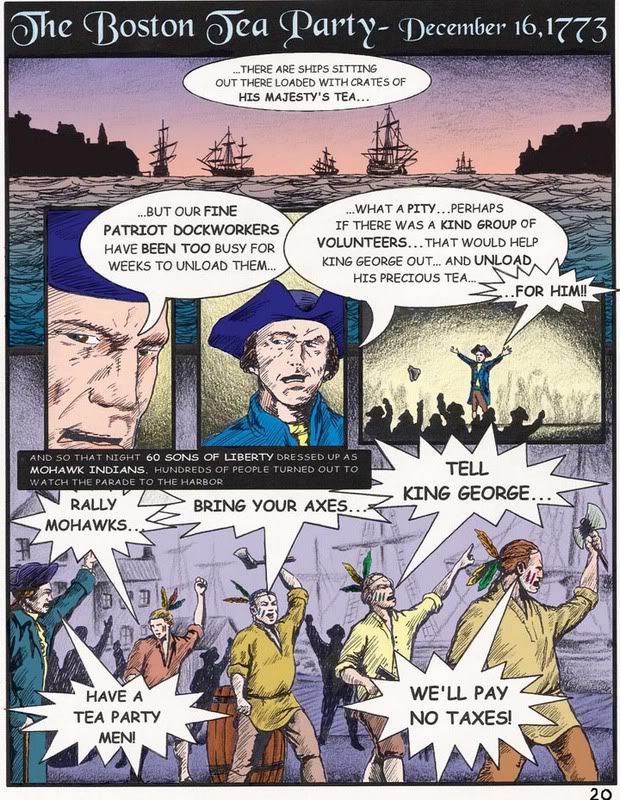
While looking around for graphically appealing material to study the John Adams' era I came upon this program's site
Here's a review from the graphicclassroom blog
IN THE CLASSROOM
Unlike many comics, this entire series by Learn Well Graphics is intended and designed to be used in the classroom. Mixing technology with comic books, Keaton writes an overview of the American Revolution that could easily be incorporated into an existing class. This series is a perfect addition to a lesson or unit on the American Revolution. What makes this so exceptional and sets it apart from other comics or graphic novels, is not just the electronic rendering of the comic on CD, but the interactive nature of the CD version of the booklet. Children will respond to the movement of the panels and the voiceovers that can read all of the text, in theatrical ways. This is brilliant on the part of the creators and is essential in an inclusive classroom. Students with disabilities and those with lower reading abilities will be engaged and can read along while the narrator reads the text. Students who are gifted or those who are especially interested in history can also use the additional resources to learn more about the American Revolution. This approach makes better use of Gardner’s Multiple Intelligences when compared to traditional lecture. Periodically, when using the CD-based comic, the narration ends and a short quiz will pop up to assess the learning. A teacher can choose to stop there for the day or continue on, based on the results of the assessment.
As for a technology-based classroom, there is no better way to teach history than through this medium. The information can be studied in several ways: one-on-one, small groups or as a classroom. Students can read through the booklet alone or in groups of two, or students could utilize technology and study the subject at a single computer in groups of two or more. The teacher could also choose to project the comic on the CD onto a screen and teach the entire class at one time. This opens a lot of doors for a teacher to work with a classroom that may have many students at many different levels.
Posted by David Ballela at 4:11 PM 0 comments
Labels: software recommendations
1776: The Great Debate
Hancock calls for debate on the resolution, and Dickinson, for the 24th time, moves to indefinitely postpone the question of independence. Read seconds the motion and the Congress votes on Dickinson's motion. The vote goes down the line: Bartlett, Adams and Lee immediately cast their votes for debating the issue of independence, soon joined by Roger Sherman of Connecticut and two-thirds of the Delaware delegation. Lewis Morris of New York abstains "courteously". Dickinson unequivocally votes against debate. Samuel Chase of Maryland states that he would welcome independence if it were given, but does not believe the war can be won, and thus votes nay. Rutledge explains that he feels no need for immediate action, and casts his vote for nay as well, immediately parroted (as usual) by Joseph Hewes of North Carolina. When Thomson calls for Dr. Hall's vote, Hall explains that though he is personally for independence, his legislature is against it, and thus is unsure how to vote. But he prefers to err on the side of his constituency and votes nay, leaving the deciding vote to Stephen Hopkins who is "visiting the necessary". He returns in time to vote in favor of debate, stating that he'd "never seen, heard, nor smelled an issue that was so dangerous it couldn't be talked about." For his trouble, he gets his rum privileges back.
The most vocal of the delegates state their positions: Dickinson is against revolt and rebellion, but in favor of petitioning King George on their grievances. Adams and Franklin argue that the colonists have not been granted the full rights of Englishmen and that it is too late for reconciliation — a year has passed since the Battles of Lexington and Concord. Rutledge, meanwhile, is worried that the rights of the individual states would be subsumed by a strong federation and Chase questions the likelihood of an American victory over the awesome might of England.
As the argument between the delegates grows more heated, Dickinson launches into a long tirade against Adams and his supporters, calling him an agitator and a madman. Adams lashes back by accusing Dickinson and his fellow conservative "cool, considerate men" of hanging to the rear of every issue to see who will triumph; this results in a physical fight breaking out. Caesar Rodney of Delaware separates the two and berates them for not focusing on the real enemy: England. He collapses from the overexertion; he has cancer. Colonel McKean offers to take him back home. This leaves the Delaware delegation with only one man present, George Read, and he is not in favor of independence. Rutledge, seeing the majority swinging in his favor, moves for a vote on the question of independence. Franklin seeks to stall the motion, and asks that the resolution be read aloud again. As Thomson is reading it, the new New Jersey delegation arrives, led by Rev. John Witherspoon. He informs the Congress that they have been instructed to vote in favor of independence. The vote is now six for independence and six against (with New York's usual "courteous" abstention), and Adams reminds Hancock of his duty as President to break all ties. Seeing that the resolution might pass, Dickinson moves that any vote for independence must pass unanimously on the grounds that "no colony [may] be torn from its mother country without its own consent." His motion is seconded by Read, and the vote produces the same tie, which Hancock breaks by voting for unanimity. His reasoning is that without consent of all the colonies, any of them voting against independence would likely be forced to fight on England's side, and that the new nation would "carry as its emblem the mark of Cain."
Posted by David Ballela at 3:25 PM 0 comments
John Adams Read Aloud EBook1
I bought both the McCullough book and the unabridged audio. I tediously matched some scans of the first few pages and edited the audio to match. I also added on a video I created from a slideshow of images from from the historic Adams' family home in Quincy
I see that the hottest thing now on amazon are the kindle reading device. It would be great if these could be made with audio matching like I did so it could be used as a reading aid for kids.
Posted by David Ballela at 2:51 PM 0 comments
Labels: read aloud
Dressed To Kill: Revolutionary War Uniforms
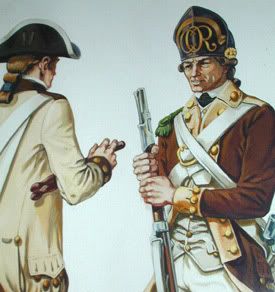 from 8/20/06 from pseudo-intellectualism
from 8/20/06 from pseudo-intellectualism
I won't mention synchronicity any more, but remember Policewoman and Angie Dickinson just a few posts ago? Well, the 1980 movie "Dressed To Kill" has a memorable scene with Angie. A good site for Revolutionar War uniforms is draytonhall.org/online_exhibits/revwar_uniforms.htm#: "Notice the difference and variety of uniforms. These are just a few examples of the many regiments that fought on both sides. The majority of the regiments listed as 1780 fought in the Southern campaign in South Carolina. These paintings are courtesy of renowned military artist Don Troiani." I combined those images along with images from a manufacturer of historical era fashions (being an historical recreator entails big bucks) to make a slide show. The music comes from an excellent colonial midi source, (halcyondaysmusic.com/colonialmusic/) Dig this blurb from the site:".. a collection of fiddle tunes from the American Revolution period in MIDI music format. This collection features minuets, country dances, marches and airs, and song tunes from the personal notebook of a certain Captain George Bush, an officer in George Washington's army. There are 54 individual MIDI file renditions of these fiddle tunes for your listening pleasure. This collection of Colonial music comes from an actual book entitled "Fiddle Tunes From The American Revolution" which contains the actual sheet music of which these songs were transcribed from."
Posted by David Ballela at 8:32 AM 0 comments
Showing The Way With Slide Shows
 from 8/28/06 from pseudo-intellectualism
from 8/28/06 from pseudo-intellectualism
I got started using slide shows as a way to introduce content in a condensed and appetizing ("forsphayze") and kid friendly way. It can also be an inspirationt for kids to do further research. Another way it could be used is as content matched with an all important assessment piece. This can be done by using the various interactive test making tools available
now online. Hot Potatoes is a free tool with lots of possibilities (from half-baked software), except I haven't quite figured out how to use it. What is easy and also free are the quiz making tools at discovery.com. Here I took a slide show about the American Revolution that I cribbed from kidsdiscover material and matched it to a multiple choice test. I constructed the test first. This test encompasses material from the first from the first 6 0r 7 slides as a word document template so I could copy and paste it into the online forms.
Postscript: I've noticed the test isn't numbered properly in Safari, but it is in Explorer
Posted by David Ballela at 8:29 AM 0 comments
Save The Country, Save The Vista
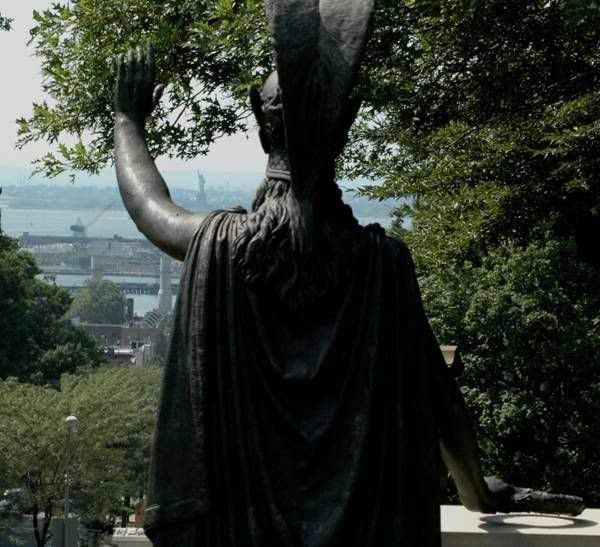 from 8/28/06 from pseudo-intellectualism
from 8/28/06 from pseudo-intellectualism
from savethevista.org: "This most significant historic Vista was dedicated on August 27, 1920, by the gift of the Irish-American businessman, Charles M. Higgins. Among those present at the dedication ceremony were New York Governor Alfred E. Smith and then Asst. Secretary of the Navy Franklin D. Roosevelt (elected Governor of the State of New York in 1928 and President of the United States in November 1932). The plaque at the base of the Minerva Monument reads as follows:“The Place Whereon Thou Standest is Holy Ground” Glory to the Memory of Our First National Heroes Who Fought and Fell on this Battle Ground to Win Our Liberty and Independence! Minerva, the Goddess of Wisdom, Glory and Patriotism, Here Salutes The Goddess of Liberty and Enwreathes This Altar in Tribute to the Heroes of American Liberty and to the Wisdom of American Institutions. The Minerva Monument has stood atop Battle Hill, arm raised, saluting the Statue of Liberty across the harbor for 85 years. Over the years, the Statue of Liberty has grown to stand for freedom and democracy as well as international friendship. It was the recognition of this friendship between France and the United States established during the American Revolution that was the basis of this gift by the people of France to the United States. This noble Statue of Liberty Enlightening the World is placed centrally in New York Harbor with its face turned toward Brooklyn where, at the other end of this historic Vista, the sanctifying Minerva Monument is strategically placed on Battle Hill in Green-Wood Cemetery. The Minerva Monument stands at the Altar to Liberty located on the highest hilltop of our first National battle-ground where our first National Heroes fought and fell for American Liberty and Independence. In our famous national shrine of Independence Hall in Philadelphia, on July 4, 1776, fifty-five of our leading patriots signed, in ink, the great Document which declared us to be a free and independent Nation, with sublime principles of Liberty and Humanity for all. The Minerva Monument is the memorial to the Battle of Brooklyn where hundreds of our young heroes signed this Declaration in their blood and were the first to lay down their lives for the New Nation.
Posted by David Ballela at 8:27 AM 0 comments
Friday, March 7, 2008
Molasses To Rum
from 1776, song by Edward Rutledge:
Molasses to rum to slaves, oh what a beautiful waltz
You dance with us, we dance with you
Molasses and rum and slaves
Who sails the ships out of Boston
Ladened with bibles and rum?
Who drinks a toast to the Ivory Coast?
Hail Africa, the slavers have come
New England with bibles and rum
And its off with the rum and the bibles
Take on the slaves, clink, clink
Hail and farewell to the smell
Of the African coast
Molasses to rum to slaves
'Tisn't morals, 'tis money that saves
Shall we dance to the sound of the profitable pound
In molasses and rum and slaves
Who sails the ships out of Guinea
Ladened with bibles and slaves?
'Tis Boston can coast to the West Indies coast
Jamaica, we brung what ye craves
Antigua, Barbados, we brung bibles and slaves!
Molasses to rum to slaves
Who sail the ships back to Boston
Ladened with gold, see it gleam
Whose fortunes are made in the triangle trade
Hail slavery, the New England dream!
Mr. Adams, I give you a toast:
Hail Boston! Hail Charleston!
Who stinketh the most?
The background
Hancock is about to call for a vote on the Declaration, when Rutledge rises to object to Jefferson's denunciation of slavery in his list of redresses. Rutledge defends slavery as a way of life in South Carolina, and reminds Jefferson that he, too, is a slaveholder. Jefferson announces that he has decided to free his slaves, and Rutledge accuses the northern colonies of hypocrisy: the northern shippers may not own slaves, but they get rich off of the trade of slaves. He reminds them that the process of Molasses to Rum to slaves is ensuring prosperity for the North. The delegations of North Carolina, South Carolina, and Georgia angrily leave the chamber, mindful of the unanimity required to pass the resolution. The resolve of the remaining delegates is broken, and they also leave.
Posted by David Ballela at 9:53 PM 0 comments
David McCullough Interview With Charlie Rose, 2
Posted by David Ballela at 8:00 PM 0 comments
Labels: charlie rose, david mccullough
David McCullough Interview With Charlie Rose, 1
An hour conversation with Pulitzer Prize-winning author and historian David McCullough about his biography of the second President of the ... all » United States John Adams. McCullough discusses his investigation into Adams' life and the extent to which the politician and intellectual revealed his political and personal life through letters and other writings.
Posted by David Ballela at 6:57 PM 0 comments
Labels: charlie rose, david mccullough
John Adams Coloring Pages: Thomas Jefferson And John And Abigail Adams
Posted by David Ballela at 6:49 PM 1 comments
Labels: coloring pages, thomas jefferson
John And Abigail From 1776: Compliments
Abigail:
Compliments of the Concord Ladies Coffee Club,
And the Sisterhood of the Truro Synagogue,
And the Friday Evening Baptist Sewing Circle,
And the Holy Christian Sisters of Saint Claire
All for you, John
I am as I ever was and ever shall be,
Yours, yours, yours!
John (speaking):
Abigail, what's in these kegs?
Abigail (singing):
Saltpeter, John!
Posted by David Ballela at 5:16 PM 0 comments
John And Abigail From 1776: Yours, Yours, Yours
Yours, Yours, Yours
Abigail:
I live like a nun in a cloister
Solitary, celibate, I hate it
Adams:
I live like a monk in an abbey
Ditto, ditto, I hate it
Abigail:
Write to me with sentimental effusion
Let me revel in romantic illusion
Adams:
Do you still smell of vanilla and spring air?
And is my favorite lover's pillar still firm and fair?
Abigail:
What was there, John, still is there, John
Come soon as you can to my cloister
I've forgotten the feel of your hand
Adams:
Madam we shall walk in Cupid's Grove together
Both:
And we'll fondly survey
That promised land
Till then, till then
I am as I ever was and ever was
And ever shall be
Yours, yours, yours, yours, yours
Abigail:
Saltpeter, John
Posted by David Ballela at 4:56 PM 0 comments
Labels: 1776, movies music
John And Abigail From 1776: Piddle, Twiddle And Resolve
Adams:
I do believe you've laid a curse on North America
A curse that we now here rehearse in Philadelphia
A second flood, a simple famine
Plagues of locusts everywhere
Or a cataclysmic earthquake
I'd accept with some despair
But, no, you sent us Congress.
Good God, sir, was that fair?
I say it with humility in Philadelphia
We're your responsibility in Philadephia
If you don't want to see us hanging
From some far-off British hill
If you don't want the voice of independency
Forever still
Then God, sir, get thee to it
For Congress never will
You see, we piddle, twiddle, and resolve
Not one damn thing do we solve
Piddle, twiddle, and resolve
Nothing's ever solved in
Foul, fetid, fuming, foggy, filthy
Philadephia!
They may sit here for years and years in Philadelphia.
These indecisive grenadiers of Philadelphia.
They can't agree on what is right and wrong
Or what is good or bad; I'm convinced
The only purpose this Congress ever had
Was to gather here specifically
To drive John Adams mad!
You see, we piddle, twiddle, and resolve
Not one damn thing do we solve
Piddle, twiddle, and resolve
Nothing's ever solved in
Foul, fetid, fuming, foggy, filthy
Philadephia!
Congress:
Someone oughta open up a window!
Adams:
Oh good God!
Abigail:
John, John, is that you carrying on, John?
Just tell the Congress to declare independency
Then sign your name, get out of there and
Hurry home to me
Our children all have dysentery
Little Tom keeps turning blue
Little Abbey has the measles
And I'm coming down with flu
They say we may get smallpox
Adams:
Madam, what else is new?
Abigail:
There's one thing every woman's missed in
Massachusetts Bay
Don't smirk at me, you egotist; pay
Heed to what I say
We've gone from Framingham to Boston
And we cannot find a pin
"Don't you know there's a war on?"
Say the tradesmen with a grin
Well, we will not make saltpeter
Until you send us pins!
Both:
Till then, till then
I am as I ever was and ever shall be
Yours, yours, yours, yours, yours
Adams:
Saltpeter, John
Abigail:
Pins, Abigail
Congress:
For God's sake, John, sit down
Posted by David Ballela at 4:35 PM 0 comments



